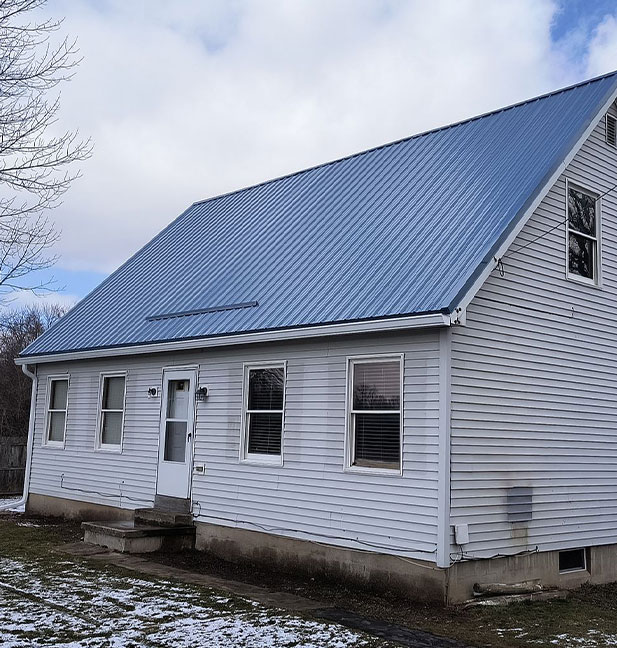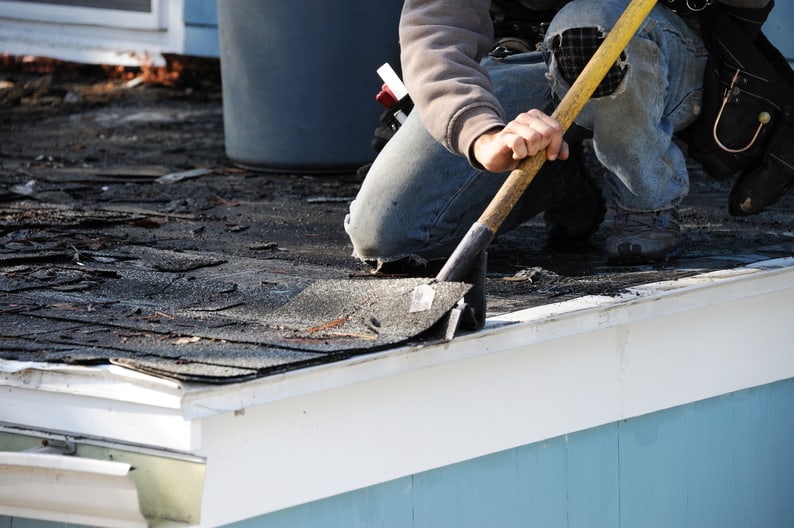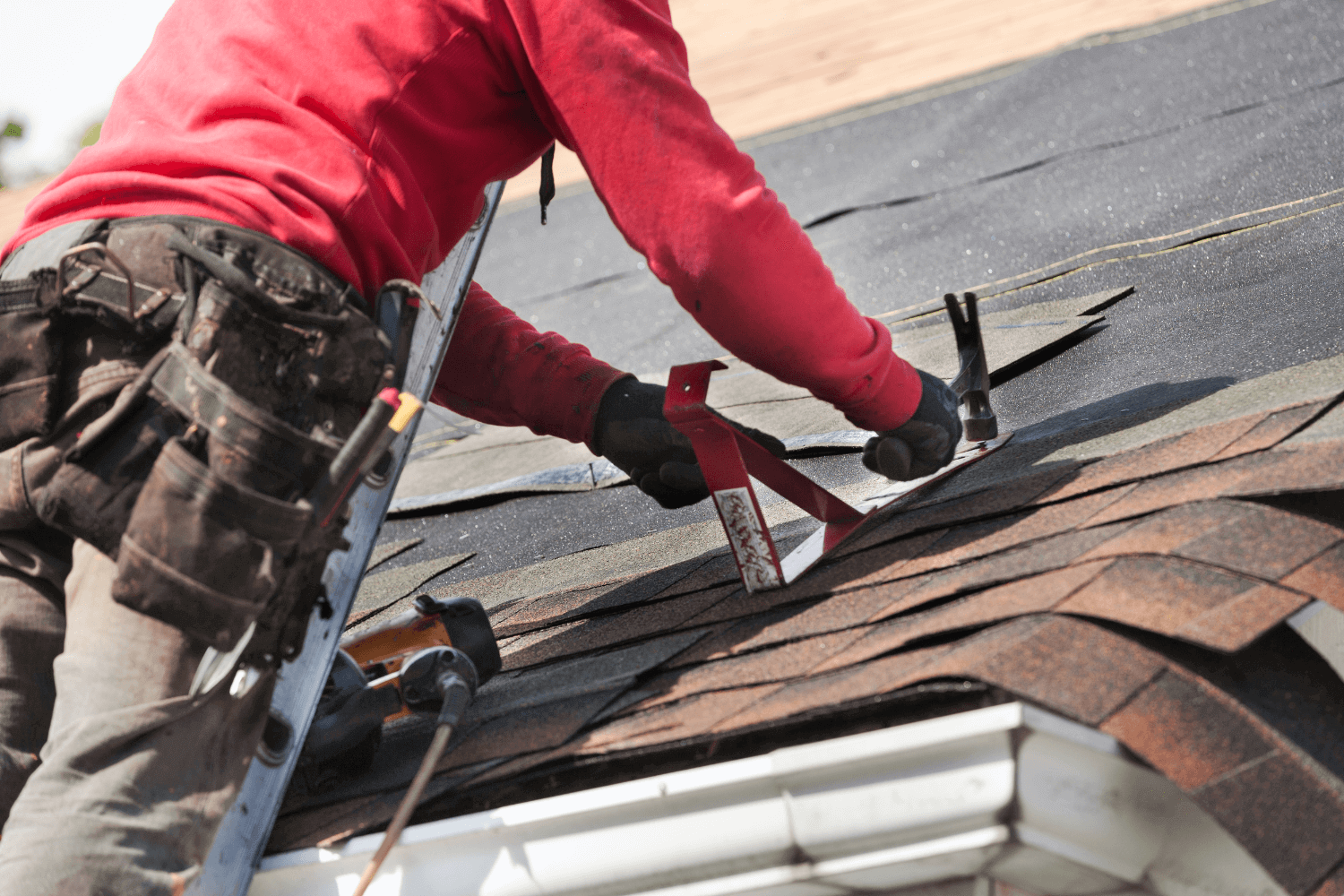Pro Recommendations on Roof Repair With Real Results
Indications You Required Roof Covering Repair Service: Shield Your Investment With These Easy Checks
Recognizing the indications that suggest a need for roof covering fixing is crucial for protecting your building and financial investment. Usual signs such as missing out on shingles, unexpected water discolorations, and granules accumulating in gutters can suggest underlying problems that, if left unaddressed, might escalate into even more severe problems. In addition, indications like sagging areas or boosted power bills can additionally indicate inadequacies or damage. To guarantee your roof stays in leading problem and to avoid costly repair work, it is important to acknowledge these very early warning indications and act accordingly. What actions should you take next?
Missing Out On or Damaged Tiles
When reviewing the condition of your roof, among the most telling indications of possible issues is the visibility of missing out on or harmed shingles. Roofing shingles function as the first line of defense against the aspects, and their honesty is essential for preserving the general health of your roofing system - I&E Roofing & Construction, Inc.. A couple of missing tiles might seem minor, but they can result in significant water infiltration, jeopardizing the underlying structure and necessitating much more substantial repairs
Damaged shingles can materialize in different methods, including curling, splitting, or blistering. Each of these conditions can decrease the performance of your roofing, enabling wetness to penetrate and lead to more serious problems. Roofing Service. It is necessary to perform routine examinations, specifically after severe weather events, as high winds and heavy rainfall can worsen tile damage
If you determine missing out on or damaged tiles, it is a good idea to deal with these issues promptly. While small fixings might be workable for a house owner, considerable damages often necessitates professional treatment. Timely action can stop more difficulties and secure your financial investment, making sure the long life and performance of your roofing system.
Water Discolorations on Ceilings
Water stains on ceilings are commonly clear indicators of underlying water damage that calls for instant focus. Identifying the source of these discolorations is necessary, as they can arise from numerous issues, including roof leakages or pipes issues. Dealing with the root cause not just prevents more damage but also shields the integrity of the home.
Identifying Water Damages

When examining for water stains, focus on both the size and form of the discoloration. Uneven forms might recommend ongoing leaks, while a lot more defined locations can indicate previous problems. Furthermore, consider the location of the spots; stains near pipes fixtures or outside wall surfaces may supply hints concerning possible sources of the water intrusion.
It is additionally important to examine the structure of the ceiling surrounding the discolorations. Peeling off paint or gurgling drywall can signal substantial dampness direct exposure, requiring instant interest. Routine inspections and prompt activity can aid protect against a lot more severe water damages, shielding both the architectural integrity of the home and the investment it stands for. Always seek advice from a specialist for a detailed assessment if you find water discolorations on your ceilings.
Causes of Spots
What factors add to the look of discolorations on ceilings? Water spots, typically materializing as blemished patches, are primarily created by leaks in the roofing system or pipes systems - I&E Roofing & Construction, Inc.. When wetness penetrates with roof products or compromised plumbing, it can gather and bring about noticeable staining on ceilings
One usual cause is harmed or missing shingles, which can permit rainwater to permeate into the attic room and, ultimately, to the ceilings below. Additionally, improper blinking around chimneys, vents, or skylights can be a considerable source of water intrusion. Plumbing leaks, whether from damaged pipes or overruning fixtures, can likewise produce spots, particularly in locations directly listed below shower rooms or kitchens.

Identifying the source of the stain is necessary for efficient repair. Ignoring these signs can result in more substantial damage, including mold development and architectural weakening, emphasizing the relevance of timely intervention to shield your financial investment.
Granules in Seamless gutters
During regular inspections of your rain gutters, the presence of granules can be a substantial indicator of roofing system wear and tear. These little, sand-like particles are commonly discovered on the surface area of asphalt tiles, working as a safety layer against UV rays and weathering. Over time, deterioration can create these granules to dislodge, leading to a series of issues that may endanger the stability of your roof.
If you notice a build-up of granules in your seamless gutters, it is necessary to take this indication seriously. The loss of granules may expose the underlying asphalt to the elements, boosting the risk of leaks and water damages. This scenario not just jeopardizes your roof covering's life expectancy but can also result in pricey repairs if not dealt with immediately.
To minimize potential damage, it is advisable to evaluate your roof routinely, especially after extreme climate occasions. In addition, engaging a professional roof service provider to analyze the condition of your tiles can offer valuable insights. Early treatment is essential to protecting your investment and making certain the durability of your roof system. Remember, granules in rain gutters are not a minor issue; they indicate the need for instant attention and prospective fixing.

Drooping Roof Covering Locations
Sagging roofing locations can show major architectural problems that require immediate focus (Roof Repair). Visible defects on the roofing's surface area, combined with the visibility of water stains inside the home, are crucial indication that should not be neglected. Addressing these troubles without delay can prevent further damage and expensive repair services
Noticeable Roofing System Deformities
Just how can house owners determine possible concerns with their roofs? Among one of the most telling indications shows up roof covering defects, especially drooping areas. A drooping roof may show up as dips or contours, indicating underlying structural troubles that can endanger the honesty of the whole roofing system. Property owners must carry out regular evaluations, seeking any kind of recognizable abnormalities in the roofline.
Numerous factors can contribute to noticeable defects, consisting of water damages, improper installment, or the weight of built up snow and debris. If a roof shows up to sag, it might suggest damaged rafters or trusses, which can result in extra severe issues if left unaddressed. A sagging roof not only jeopardizes the structural security of the home however can additionally result in expensive repair service bills if the problem escalates.
If drooping or other noticeable deformities are observed, it is a good idea to speak with a specialist roof covering specialist. They can assess the situation, identify the reason for the sagging, and advise appropriate fixing options. Prompt intervention is vital to secure your investment and assure the longevity of your roof covering.

Water Stains Inside Home
The visibility of water spots inside the home typically signals possible problems with the roof, particularly in areas where sagging has been observed. These stains usually indicate that water is permeating with the roofing product, which can bring about considerable architectural damages if left unaddressed. Drooping roofing locations may be caused by a variety of elements, including insufficient assistance, gathered wetness, or the degeneration of roof covering products.
When you observe water spots, it is important to explore the source of the wetness. Search for signs of sagging in the roof covering framework, as this can exacerbate the issue. Often, drooping areas can trap water, causing leakages and further damages. Furthermore, it is necessary to evaluate the age of the roof covering; older roofings are more prone to deterioration, increasing the likelihood of leaks.
Prompt action is needed to minimize damage. Speak with a certified roofing expert to analyze the situation and suggest suitable repairs. Ignoring water stains and drooping can result in pricey fixings and jeopardize the integrity of your home. Secure your investment by resolving these indications before they rise into more extreme problems.
Increased Energy Bills
An unexpected spike in power costs can typically indicate underlying issues with your roof. When your roof covering is endangered, it can cause considerable air leaks, allowing conditioned air to leave and unconditioned air to penetrate your home. This ineffectiveness forces your heating and cooling systems to work harder, leading to enhanced energy usage and higher energy costs.
One usual offender is damaged or missing out on roof shingles, which can subject your home's inside to the components. Additionally, insufficient insulation as a result of roofing system damage can add to energy loss. If you discover a regular surge in your energy expenses without an equivalent modification in use routines, it is vital to explore potential roof-related problems.
Regular roof covering examinations are vital for determining problems before they rise into pricey fixings. Search for visible signs of wear, such as sagging areas, splits, or spaces. These may indicate that your roofing is no more providing the essential obstacle versus the components. Addressing these issues without delay can help restore your home's power effectiveness and safeguard your investment over time. If you suspect an issue, get in touch with a roof covering professional for a complete examination.
Mold or Mildew Growth
Mold or mildew growth on your ceiling or wall surfaces can be a clear sign of roof-related issues, specifically when wetness infiltrates your home. These fungi prosper in wet environments and can posture severe health risks, consisting of respiratory issues and allergies. Their visibility commonly recommends that your roof covering may be jeopardized, enabling water to seep in with leakages or spaces.
To evaluate the circumstance, try to find dark places or staining on surface areas, normally in areas near the roofline or where water might build up (Roof Repair Company). In addition, look for any type of water stains, peeling paint, or soft places in your ceiling or wall surfaces, which may show continuous wetness troubles
If you observe mold and mildew or mold, it is necessary to act promptly. Not only can proceeded dampness damages your home's architectural honesty, but it can also lead to costly fixings down the line. Involving a specialist professional roofer can assist determine the resource of the issue, whether it's harmed tiles, inappropriate air flow, or other problems. Normal assessments and upkeep can help protect against mold development and safeguard your financial investment, making certain a risk-free and healthy living setting.
Age of the Roof
Reviewing the age of your roof covering is vital in identifying its total condition and possible need for repairs. The majority of roof materials have a details lifespan, typically ranging from 15 to three decades, relying on the sort of material used. Asphalt roof shingles, as an example, normally last about 20 years, while metal roof coverings can withstand for 40 years or even more. As roofing systems age, they come to be much more susceptible to harm from weather, bugs, and various other ecological factors.
Routine evaluations are necessary for roofing systems older than 15 years. Indicators of wear, such as broken or curling Inc. shingles, missing out on floor tiles, or rust on metal surfaces, suggest that your roof might require instant attention. In addition, inner signs and symptoms like water spots on ceilings or wall surfaces can signify underlying concerns linked to an aging roof.
If your roof covering is approaching its anticipated life-span, take into consideration getting in touch with an expert roofing professional for a detailed evaluation. They can give insights on repair alternatives or recommend a replacement if needed. Positive monitoring of an aging roofing can prevent pricey damages to your home and warranty that your financial investment stays safeguarded.
Often Asked Concerns
Exactly how Often Should I Inspect My Roof Covering for Damage?
Regular roof evaluations are vital for preserving the stability of your home. It is a good idea to check your roofing at the very least twice a year, ideally in the springtime and loss, to recognize any kind of possible problems early on. Additionally, after extreme weather events, such as hefty tornados or hailstorm, a detailed assessment is suggested. Dealing with minor damage promptly can protect against pricey repair services and extend the life-span of your roof considerably.
Can I Repair My Roofing Myself?
While it is feasible to fix your roof covering on your own, it is important to evaluate your skills and the intricacy of the damages. Small issues, such as changing a few roof shingles, may be manageable for a DIY enthusiast. Significant fixings or structural problems typically require expert competence to ensure security and compliance with building codes. Constantly prioritize your safety and security and think about consulting a roof specialist for substantial damage or if you doubt regarding the fixings.
What Are the Common Root Causes Of Roofing Leaks?
Typical reasons for roofing system leakages consist of harmed shingles, which can take place due to age or serious climate, and poorly sealed vents or flashing that might enable water infiltration. Additionally, blocked rain gutters can result in water back-up, causing leakages. Structural issues, such as sagging roofing systems or endangered underlayment, also contribute to this issue. Normal assessments and upkeep are vital to identify these susceptabilities and avoid pricey damage to your home.
How Can I Select a Reputable Roofer?
Picking a reputable roof contractor includes detailed research and analysis. Begin by looking for suggestions from trusted sources and inspecting on the internet reviews. Verify the contractor's licensing, insurance, and experience in roof covering projects similar to your own. Demand in-depth price quotes and compare them for openness. Furthermore, ask about guarantees and post-installation assistance. A trusted service provider needs to interact clearly and show professionalism and reliability throughout the procedure, guaranteeing your financial investment is well safeguarded.
What Is the Average Life-span of Different Roof Covering Materials?
The ordinary lifespan of roof covering products differs substantially. Asphalt shingles typically last 15 to thirty years, while steel roofing systems can endure 40 to 70 years. Wood shakes usually have a life expectancy of 20 to 40 years, whereas clay or concrete floor tiles can surpass half a century with appropriate maintenance. Synthetic roofing materials might use longevity equivalent to standard choices, commonly lasting 30 to 50 years. Recognizing these life-spans aids in planning for maintenance and substitute.